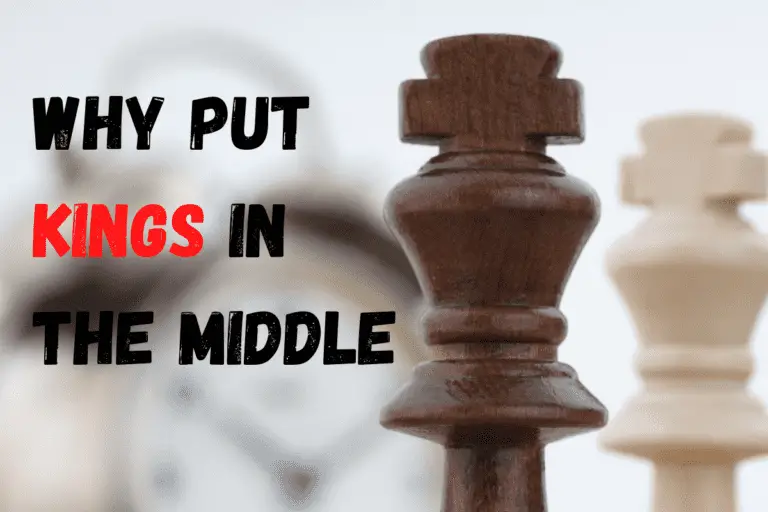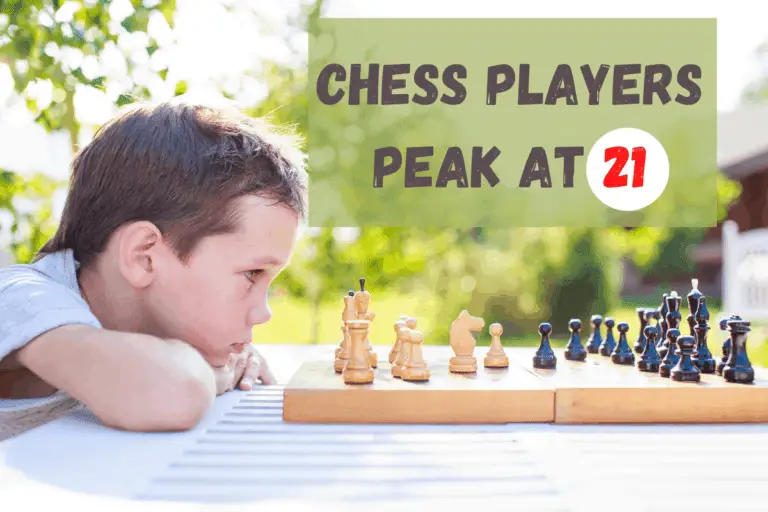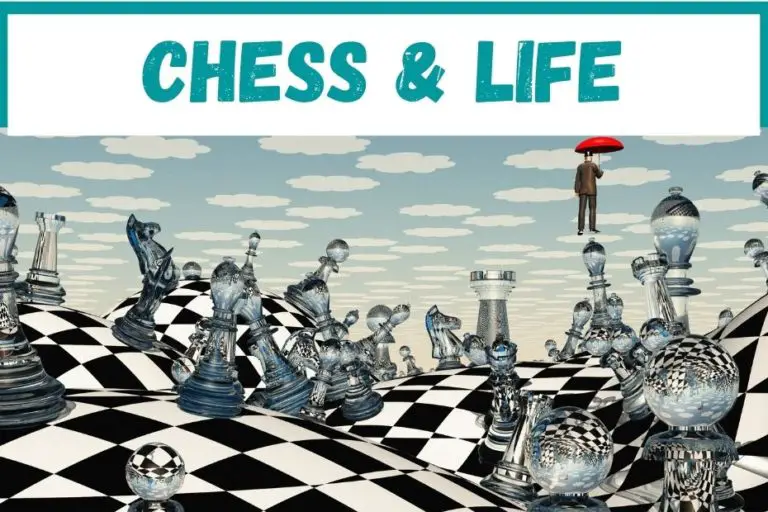How to Set Up A Chessboard Correctly (6 Simple Steps)
⭐⭐⭐ Take 6 minutes to read and improve your chess game ➡️ : This article was first published on, and is Copyright of Chessquestions.com
Chess is an awesome game, but it can be a little confusing if you’re just getting started and you need to know how to setup a chess board. There are all of these strange-sounding terms around the chessboard like “rank” and “file.”
I want you to get off on the right foot, so I’ve put together some quick tips for setting up your chessboard and getting the pieces in position in the correct way to set up a chess board.
Where to put the pieces on the Chess Board Set Up
With the pawns lined up on the second rank, and the more valuable pieces lined up on the first, with rooks adjacent to knights, the bishops come next and Queen and King in the middle, your chess board set up is complete for its starting position, pieces in positions and ready for white to make the first move.
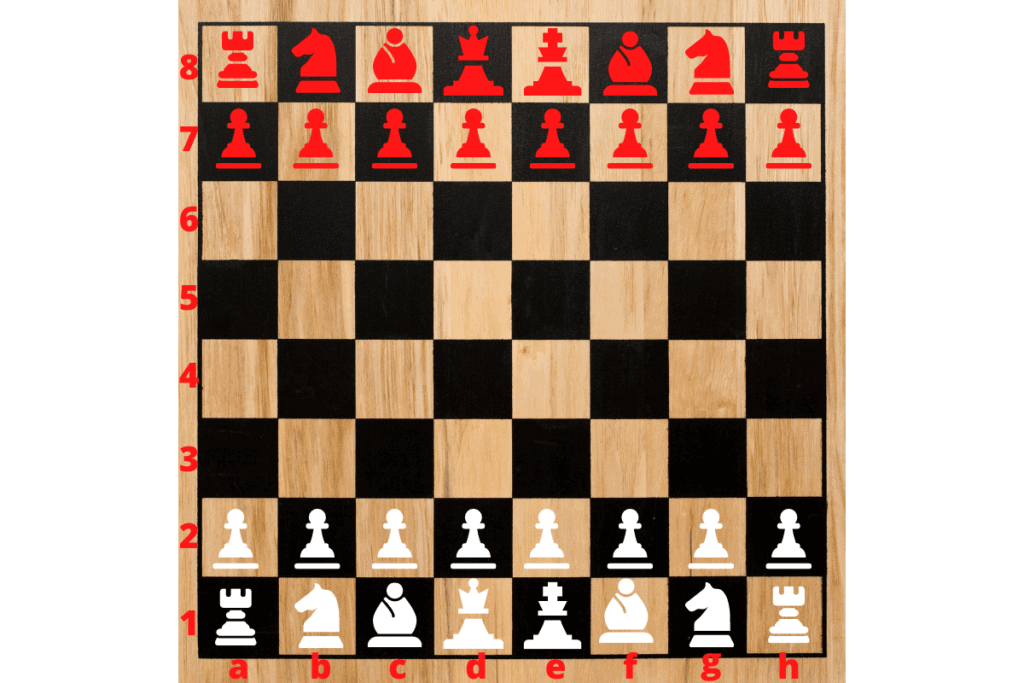
The chessboard set up all looks fairly simple at first glance, but you would be amazed how many times I have seen the board set up incorrectly and a game already underway. It will seem crazy that it could happen after you have read through this guide to setting the chess board up, but you may even recognize having seen it happen before yourself.
A white square should be in the bottom right-hand corner
before placing any pieces on the chessboard you should ensure that there is a white square in the bottom right-hand corner.
It may not seem important at first but it dictates that the pieces on the first rank are all set up correctly.
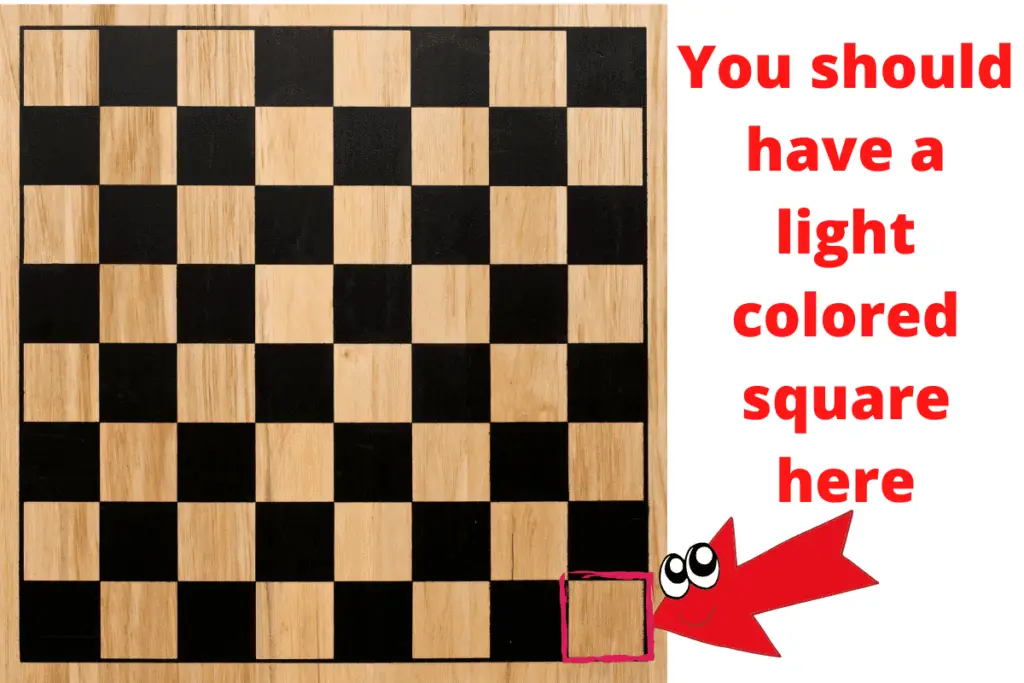
NOTE: Not all chess boards have black and white squares and many chess set have pieces that are different colors. So you may have to consider light squares and dark squares, light pieces and dark pieces.
Indeed, my favorite chess set has red and black pieces, where red would be considered the light side of course.
Ranks and Files on a chessboard
So you keep hearing rank and file mentioned, but what is the rank and file meaning in chess?
We might ordinarily consider rank and file as describing the ordinary members or an organization as opposed to the leaders, but in chess, the ranks and files or more military terms for the horizontal and vertical lines on the board.
- The horizontal lines from side to side as you look at the board are the ranks
- The Up and Down vertical lines are the files
- There are diagonals across the board too
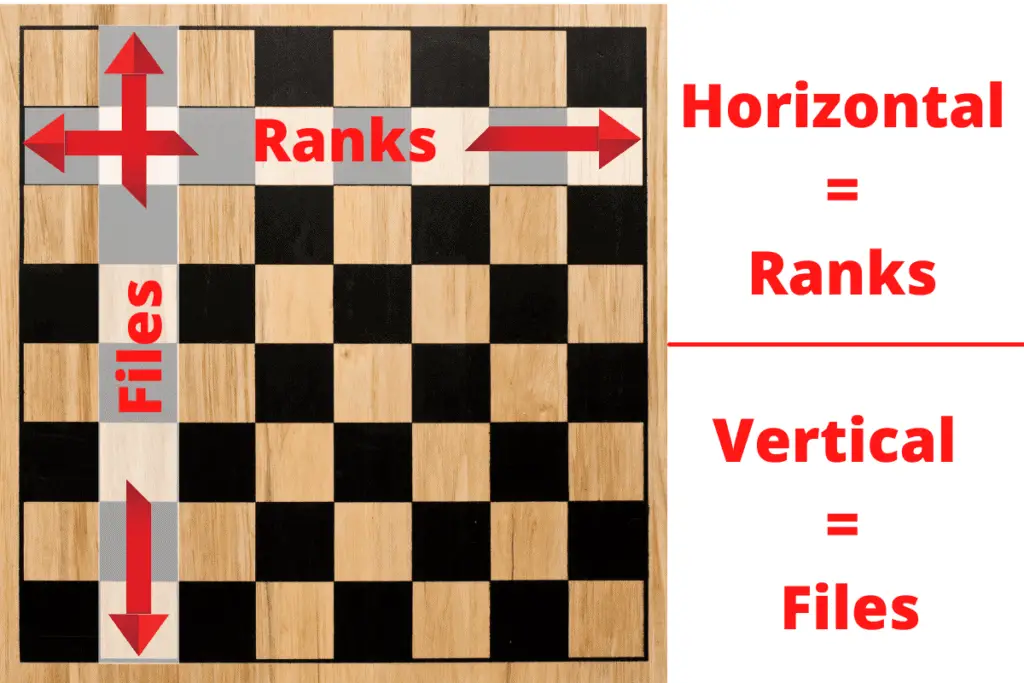
All the chess pieces are dictated how they move across the board by the various moves chess pieces can make.
How to Identify the Pieces
Not all chess sets will look the same. In some cases, with very elaborate chess sets, you might find it difficult to figure out which piece is which once you’ve eliminated the 16 pawns.
Traditional pieces are the most common, however, and if you have a cheap, or beginner set, this is the classic look of each piece.
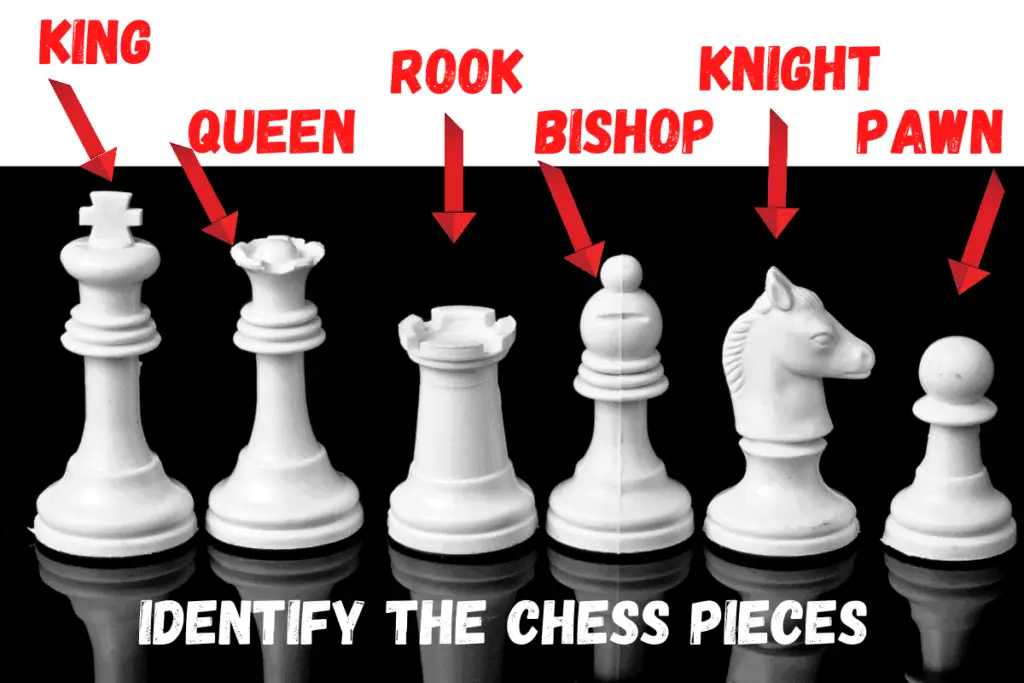
You will have 32 individual chess pieces in all. 16 white pieces and a further 16 black pieces. You may even have an extra queen (Strongest pieces) of each color too. The extra white queen and black queen are used for pawn promotion.
All of the black pieces start on one side of the board and belong to one player, the white on the other belonging to the other player in the game.
Correct Placement of Pieces on the Chess Board (6 Steps)
So let’s run through where the 6 different pieces of your chess set are placed on the board for the start of a game.
Step 1: Place Your Pawns
Start by placing the eight pawns in a straight line across the board on the second row in – The second rank. I always think this looks really smart and tidy!

White pawns on one side of the board, the black pawns on the other.
Pawns are the least valuable and considered a minor piece on the board but have a more varied movement than you think at first. Once you have completed this guide to get the board set up correctly, find out how a pawn moves in the guide to chess moves. [Link}
Step 2: Place the Rooks in the corner
Still calling it a castle? You’re not entirely wrong, but let’s get them in place. You have two rooks, and they go, one each in the corners on the first rank (Back row)
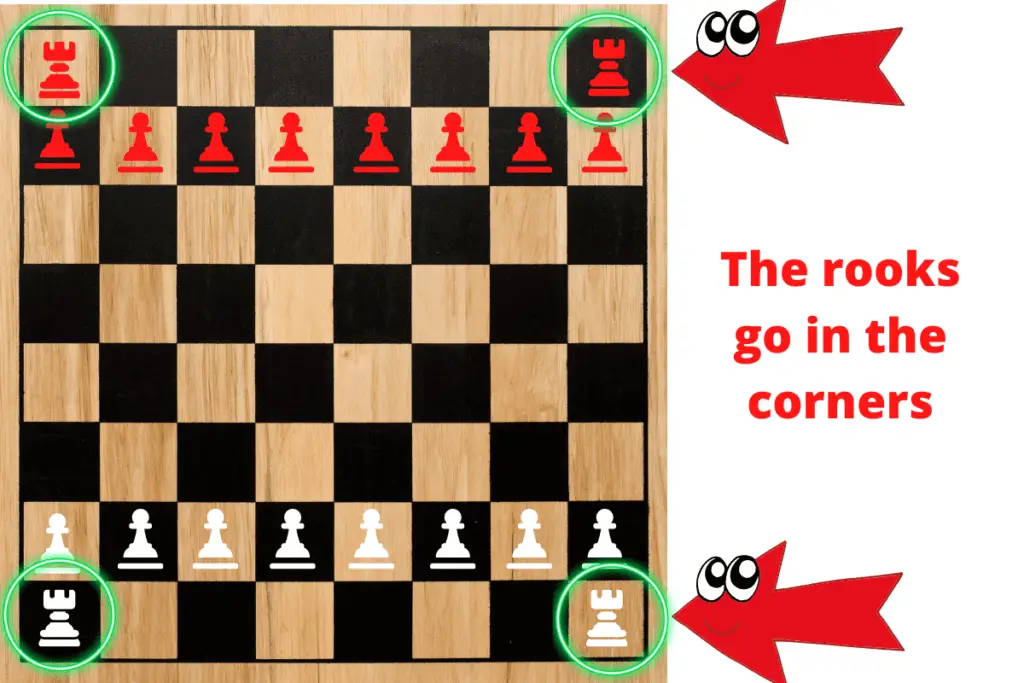
The Rooks are primary pieces and can move any number of places on the horizontal squares or vertical squares.
Step 3: Place the Knights Next to the Rooks one Square in
Much like the rooks are often called castles, the knights might also be referred to as horses!! The Knights sit on the inside of the Rooks.
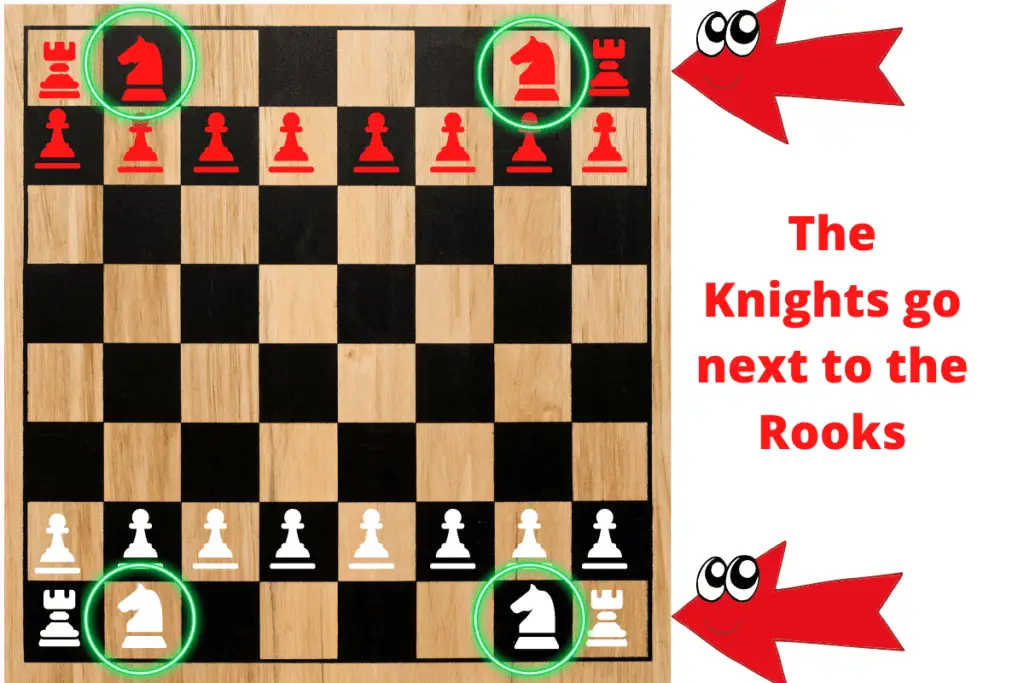
Take a look at the guide to how chess pieces move for a full guide on the more unique fashion in which a knight, a complicated piece, can move around the board.
Step 4: The Bishops Flank the King and Queen
You have two bishops to place, they are identical-looking pieces, but one will be the King’s bishop, the other, the Queen’s bishop. They are easily identifiable even after they have moved from their starting squares as they will sit one on white, and the other on black.
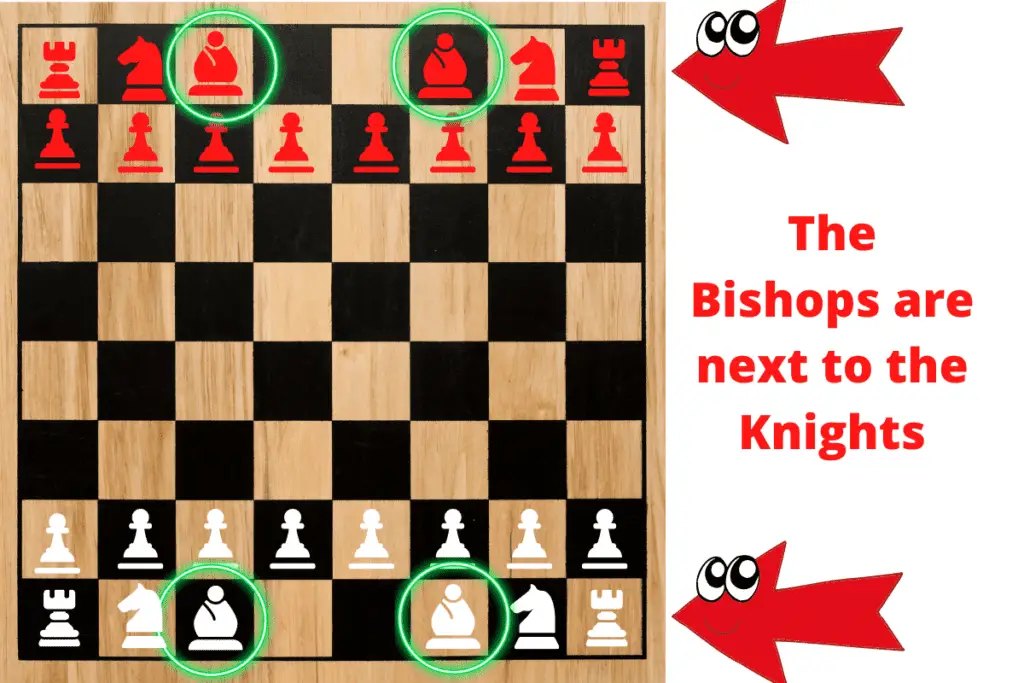
Because they move only diagonally, they can never change the color of the square on which they sit, so you always know which is which. Doesn’t make a lot of difference though!
Once you have bishops on squares it’s just the Queens and Kings left.
Step 5: Place the Queen on the Corresponding Colored Square
You know have only two squares left, side by side, and this is where the King and the Queen will reside. It is easy to remember that the Queen will always ‘sit on her own square’ – This simply means, the square that corresponds with the color. Light-colored queen on a light-colored square, black queen on a black square. The Queen is the most powerful piece in chess.
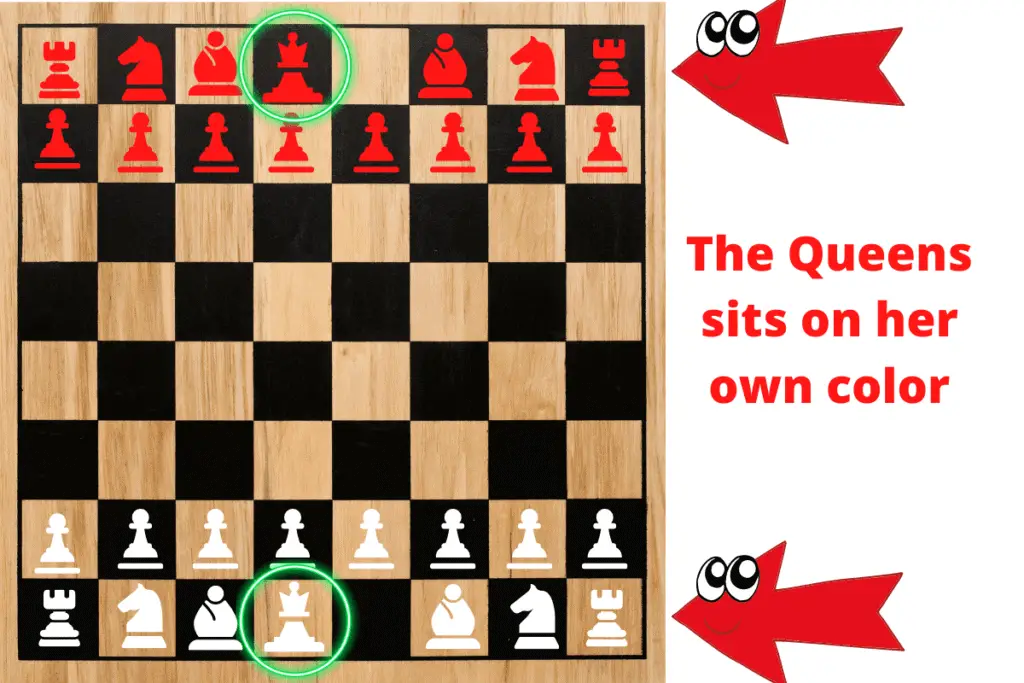
Step 6: Put the Kings in Place
There is only one square left on each side of the board now, and this is where the Kings start the game. They should have a queen on one side and a bishop on the other.
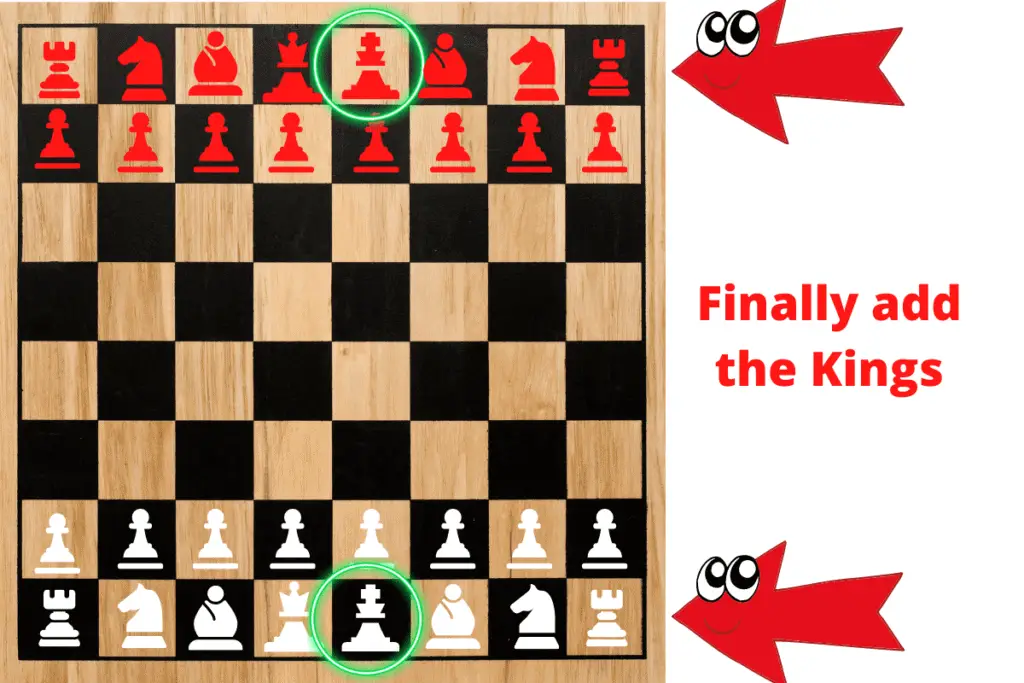
All set? Yes? Cool – you’re ready to play your chess game.
Don’t forget, white always go first!
Why Does White Go First in Chess?
There is no documentation or record as to any reasoning why white should always go first in chess, indeed white pieces were originally red. White going first became standard over time and helps with notation and record of moves today.
Despite the potential 1000 year+ history of chess, it was not until around 1857 that it was suggested that white going first, with it being published as an official rule around 1889.
Related Questions for Chess Board Set Up
These questions are answered in depth above, but for a quick answer, these are the most popular questions asked about setting up a chess board
How to set up chess table?
- Light Square in the bottom right corner
- Rooks in the Corners
- Knights next to Rooks
- Bishops next to the the Knights on the inside
- Queen goes on the same square as her color (eg White Queen = Light Square)
- King between the Queen and Bishop
- Arrange 8 pawns in a row in front of the pieces already in place
What Does a Chess Board Look Like
A chessboard looks like a square broken up into 64 smaller dark and light-colored squares on an 8×8 grid. 32 Squares will be dark, 32 will be Light, commonly referred to as ‘checkerboard’ style, onto which the chess pieces are placed and the game played out.
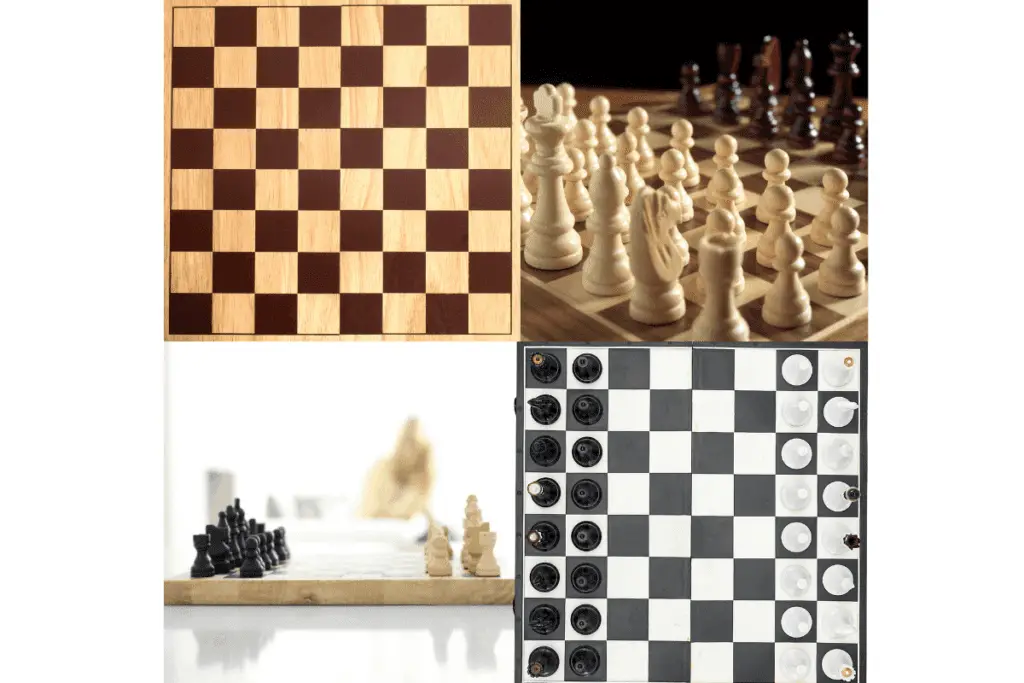
What color does the queen go on in chess?
The queen is positioned four squares in from the left side of the board between the Queens Bishop and the King. The square should correspond to her color either light or dark. If this is not the case, check the board has a light square in the bottom right hand corner as you view it.
In chess where does the king go?
The King sits on the back row of squares between the Kings Bishop and the queen on a contrasting color square to his own. He should be five squares in from the right hand side of the board. Directly across the board should be the opposing king

